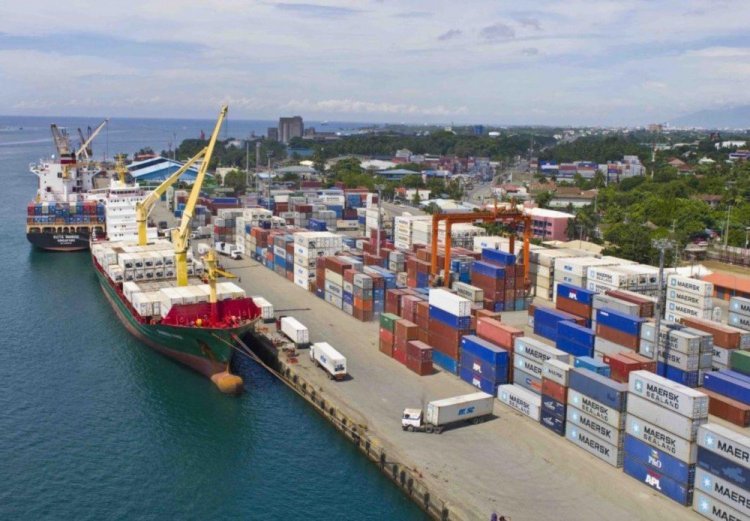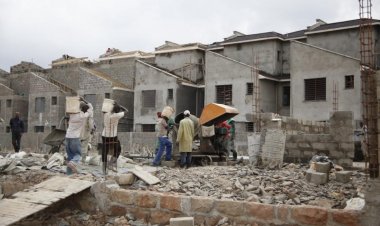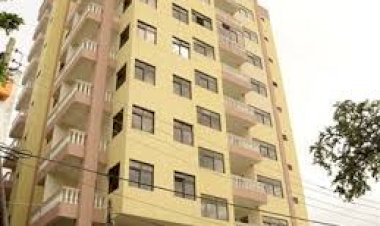The Lamu Port; African Cargo Transportation Hub
In the initial plan, cargo entering the region from China docks at Singapore where it is then offloaded to smaller ships en-route to Mombasa while those entering the region from Europe would dock at Omans’ Salala Port before they are shipped to the region.

Lamu Port-South Sudan-Ethiopia Transport Corridor project (LAPSSET) which was launched in 2012, is set to revive Kenya’s fallen economy that has been greatly affected by the Covid-19 pandemic.
 President Uhuru and Prime Minister Dr. Ahmed of Ethiopia at the Lamu Port in 2020 [Photo/Courtesy]
President Uhuru and Prime Minister Dr. Ahmed of Ethiopia at the Lamu Port in 2020 [Photo/Courtesy]
The KSh. 2.5 Trillion project which is being constructed by China Communication Construction Company (CCCC) will open up the under-developed northern region through trade, communication and improved security, a community that has been marginalized for a long time.
Upon completion, the port is expected to have 32 berths, 29 of which will be financed by the private sector Investors, through a public-private partnership (PPP), while the first 3 berths are financed by the government of Kenya. The sea bed will be drenched up to 18m to create berths and container terminals.
While launching the 1st berth by the president of Kenya, Honourable Uhuru Muigai Kenyatta, Maersk operated MV Cap Carmel and MV Seago Bremerheavel were the first and second Vessel shipping lines to dock at the port. The port will help decongest the busy Mombasa Port, which when you look at the data by the Kenya Ports Authority (KPA) has since doubled to 1.3 million tonnes from 624,000 tonnes in a period of seven months.
This LAPSSET mega project will lead to the development of other projects including the construction of the road between Kenya and Ethiopia, a transportation hub for rail, and an oil pipeline from northern Kenya to Ethiopia, Uganda and Southern Sudan, an oil refinery and three resort cities in Isiolo, Lamu and Turkana, Highways, and International airports in Lamu, Isiolo and Lodwar.
The Kenya Ports Authority (KPA) managing director Daniel Manduku, in a past event, told journalists that the Kilindini Port cannot handle Suezmax, Chinamax vessels or even Neo-Panamax vessels because of its shallow depths, therefore Lamu Port will be a game-changer.
In the initial plan, cargo entering the region from China docks at Singapore where it is then offloaded to smaller ships en-route to Mombasa while those entering the region from Europe would dock at Omans’ Salala Port before they are shipped to the region, but with the Lamu port, all these barriers will be removed and it will help save time and cost.
The handling capacity of a port is normally measured in terms of Twenty-foot Equivalent Units (TEU). Mombasa Port which comprises Kilindini Harbour, Port Reitz, Port Tudor has a capacity of 2.65 million TEUs while the expected total carriage of Lamu Port is 23.9million tonnes.
Although the mega project has potential benefits to its surrounding neighbourhood, major issues around its construction were;
a) Land rights
Many residents complained that the government had acquired more land at the beginning of the project than what was paid compensation.
b) Security
Constant attacks by Al-Shabaab Militant groups in neighbouring Somalia has raised concern about the issue of security in Lamu port but currently, tight security operations have reduced incidences of insecurity in the region.
c) Local livelihoods
The construction of the port has disrupted the economic livelihoods of the local fishermen due to extensive restricted areas which hindered most fishermen from getting access to viable fishing grounds. In a court ruling fishers were awarded about 1.7 million in compensation but the government has since delayed payments.
d) Job opportunity
Atleast 100 youths are going to be trained as dockers by KPA in order to handle these specialized equipments. Lamu Port officials noted that when the port becomes fully operational about 500 direct jobs will be created and more indirect jobs will come up i.e creation of business opportunities to the local investors.
-Edited by Skeeter Imisa

































